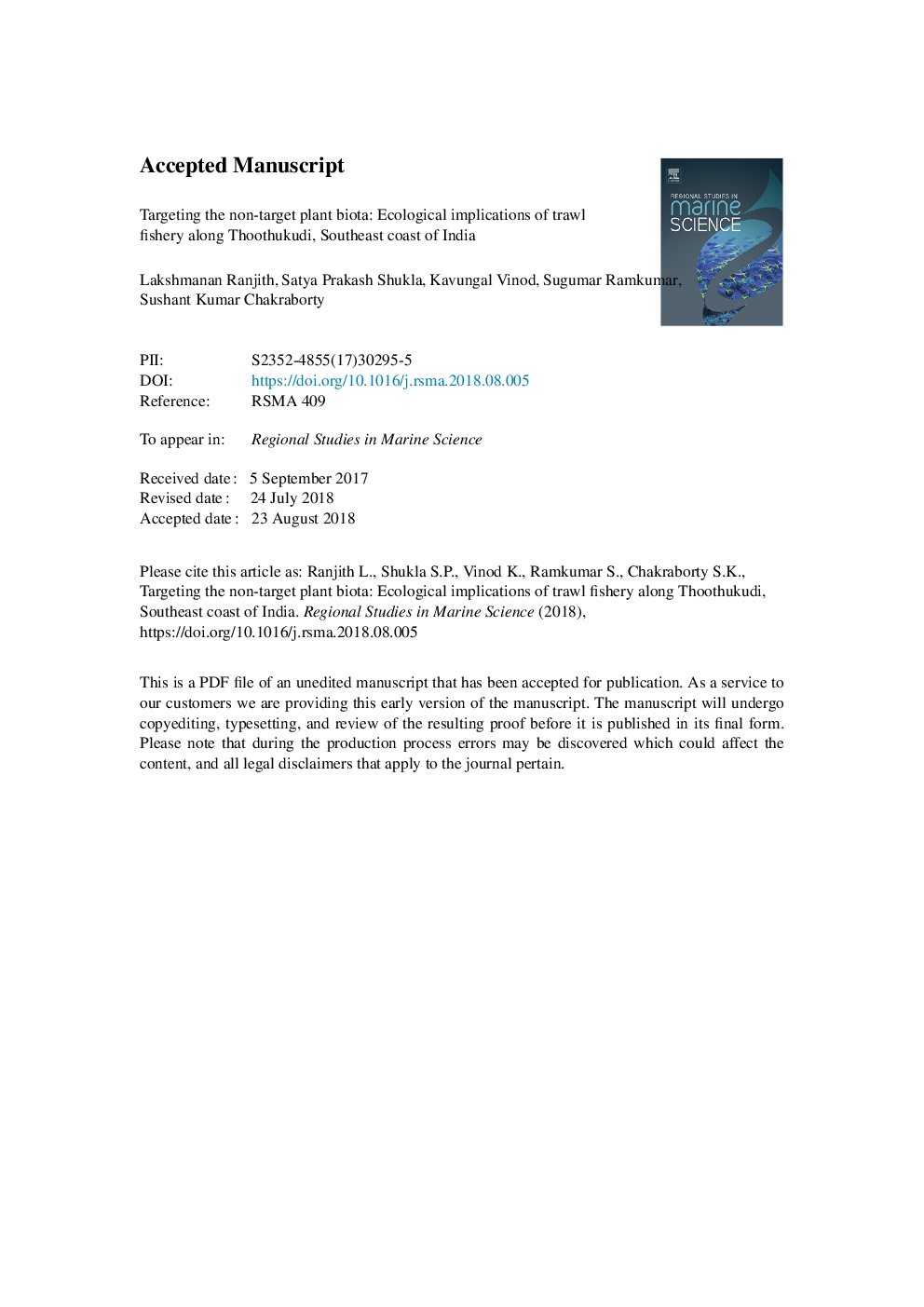| Article ID | Journal | Published Year | Pages | File Type |
|---|---|---|---|---|
| 10115899 | Regional Studies in Marine Science | 2018 | 38 Pages |
Abstract
Baseline information about the quantitative aspects of the marine plant biota dislodged and discarded during the trawl fishery is not available in the literature. An attempt was made to document the diversity and biomass of plant biota (seaweeds and seagrasses) destroyed and discarded during the trawl operations along the Tuticorin (renamed as Thoothukudi), Southeast coast of India. Fifteen species of seaweeds and three species of seagrasses were recorded during the study period. The biomass of plant biota discarded was 5 to 50 kg/haul/h during the study period, and the average discard was higher (44.4%) in the pre-monsoon season. The biomass dislodged mainly constituted the seagrasses (63.0%) whereas seaweeds contributed to the extent of 37.0 % of the total biomass. The variation in the values of the biomass of seaweeds and seagrasses shows no statistically significant difference (p-value >0.05) between the seasons. Among the seaweeds, Solieria robusta was most severely damaged species (9 kg/haul/h) whereas the seagrass Cymodocea serrulata was destroyed to the extent of 30 kg/haul/h. In the context of growing environmental and ecological significance of the marine plant biota for ecological balance and fisheries, this report will contribute in delineating effective policies and framework for sustainable fisheries, giving due importance to the conservation of marine flora.
Keywords
Related Topics
Physical Sciences and Engineering
Earth and Planetary Sciences
Oceanography
Authors
Lakshmanan Ranjith, Satya Prakash Shukla, Kavungal Vinod, Sugumar Ramkumar, Sushant Kumar Chakraborty,
